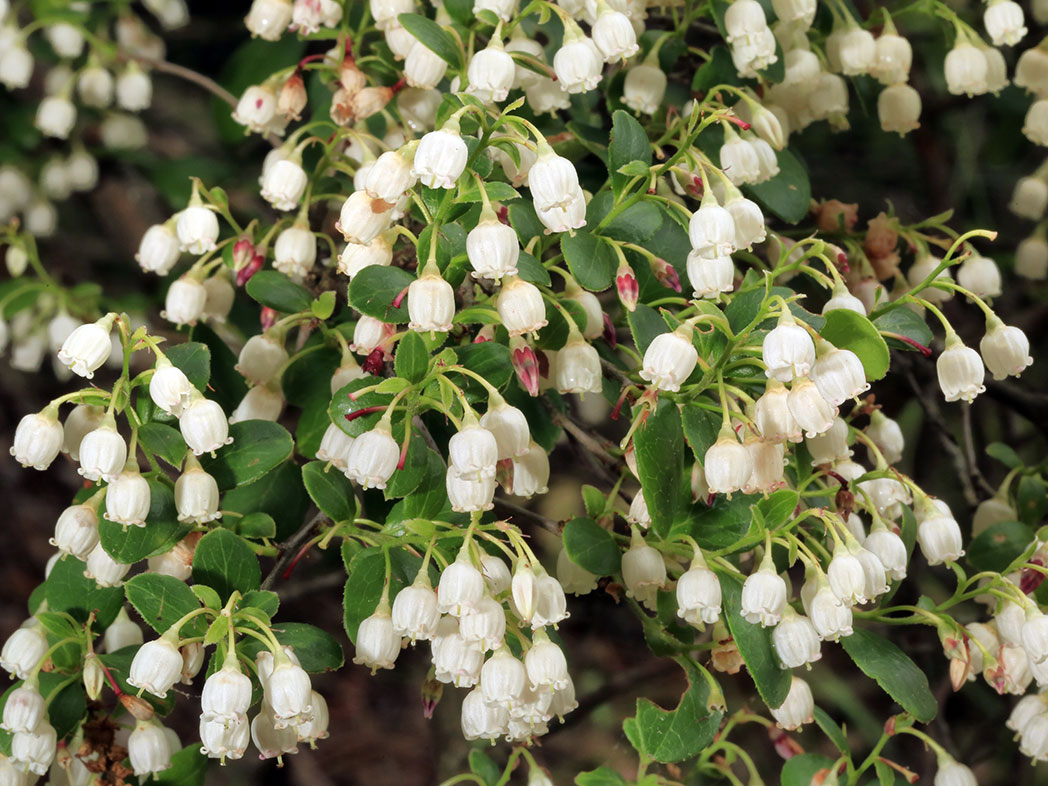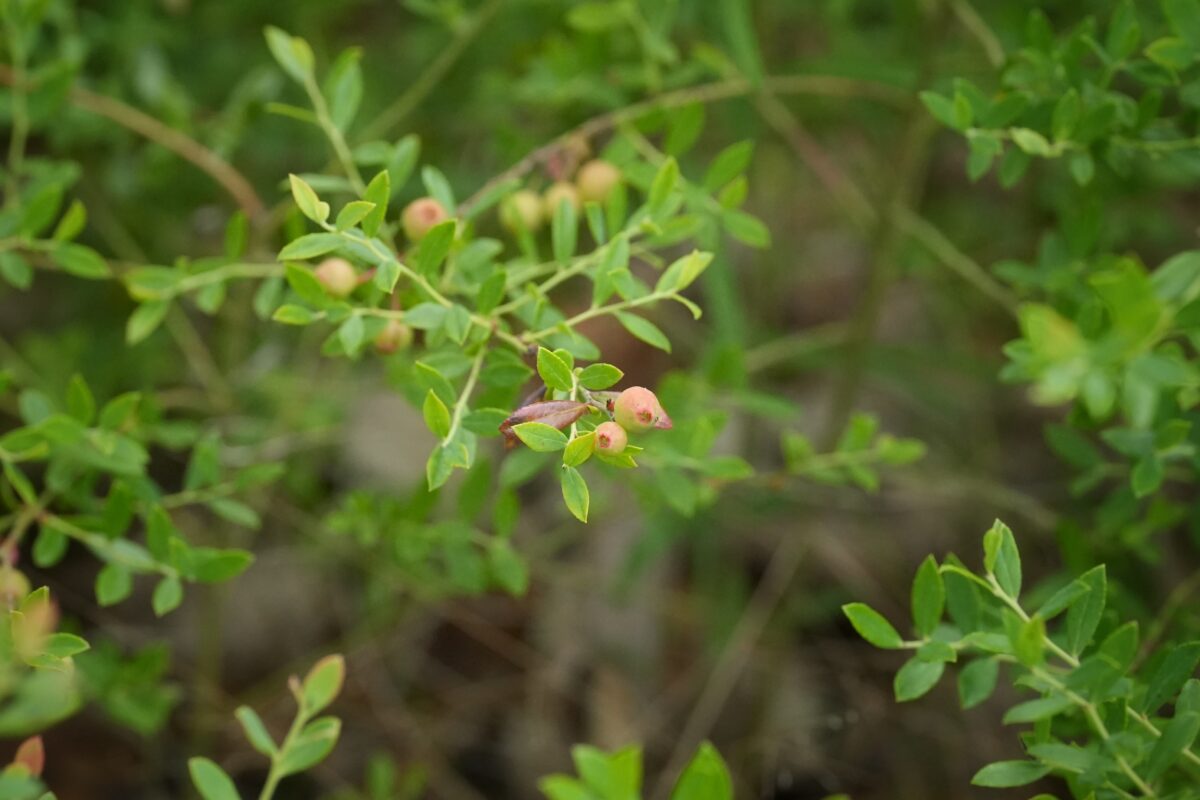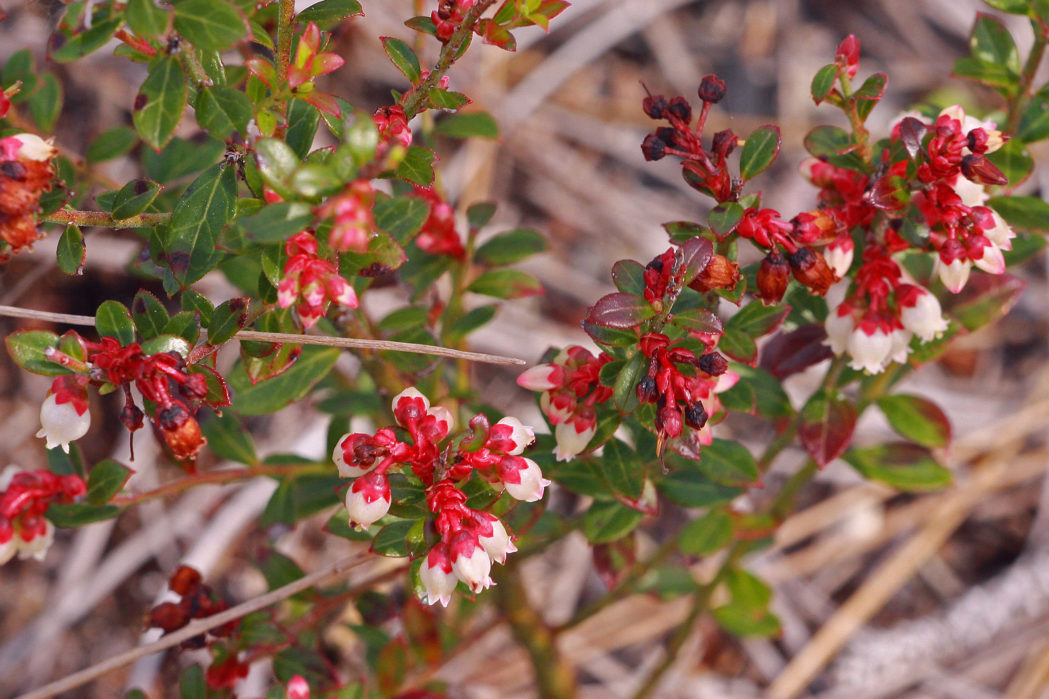Sparkleberry
Pictured above: Sparkleberry (Vaccinium arboreum) by Alan Cressler, courtesy of Lady Bird Johnson Wildflower Center. Click on terms for botanical definitions. View post as a PDF.
Sparkleberry (Vaccinium arboreum) is a flowering shrub to small tree found in hammocks and woodlands throughout much of Florida. It is the larval host for the Striped hairstreak and Henry’s elfin butterflies. In spring, its many small but fragrant flowers attract a variety of pollinators — especially native bees. Berries appear in late summer and may remain on the plant well into winter, providing food for birds and other wildlife. Humans can eat them, too, but their bland to bitter flavor makes them a better component of pies and jellies than a trailside nibble. Sparkleberry is tallest of the blueberry (Vaccinium) species.
The delicate white flowers are five-lobed, bell-shaped and cupped in a pale green calyx. They are born in clusters on elongated racemes. Leaves are alternately arranged and elliptic to ovate with entire or finely serrated margins. A central vein extends beyond the leaf’s rounded apex. Leaf surface is dark and glossy, while the underside is lighter in color and faintly pubescent. Fall leaves may turn pinkish or purplish. The trunk and branches are often twisted. They appear mottled as the gray outer bark peels off to expose the reddish-brown inner bark. Fruit is a green berry that turns purplish-black when ripe.
The species epithet arboreum is from the Latin arboreus, meaning “tree” or “resembling a tree.” The common name Sparkleberry is thought to be a reference to the plant’s shiny fruit. Another common name, Farkleberry, is likely a misquote or misspelling of Sparkleberry.
Historically, the plant has several cultural and medicinal uses, including tool handles from the wood, a remedy for dysentery from the berry juice, and a sore throat treatment made from an extract of the leaves.
Family: Ericaceae (Heath or heather family)
Native range: Panhandle; peninsula south to Lee and Martin counties
To see where natural populations of Sparkleberry have been vouchered, visit florida.plantatlas.usf.edu.
Lifespan: Perennial
Soil: Moist to dry, well-drained, acidic sandy soils
Exposure: Full sun to partial shade
Growth habit: Up to 30’ tall with 5–10’+ crown spread
Propagation: Seed, division
Florida regions of landscape suitability: North, Central, South
Garden tips: As a landscape plant, Sparkleberry is largely underutilized. However, its attractive foliage and bark, irregular form, showy flower clusters and abundant shiny fruit provide year-round interest. The plant is slow-growing and long-lived. It is easy to maintain, drought tolerant and adapts well to different soil types. In colder climes, the plant may lose its leaves, but it generally performs as an evergreen in Central and southern Florida.
Plants are occasionally available from nurseries that specialize in Florida native plants. Visit www.plantrealflorida.org to find a nursery in your area.
Learn more about Sparkleberry from the Florida Native Plant Society and the Institute for Regional Conservation.
For information on other Vaccinium species, see these resources:



